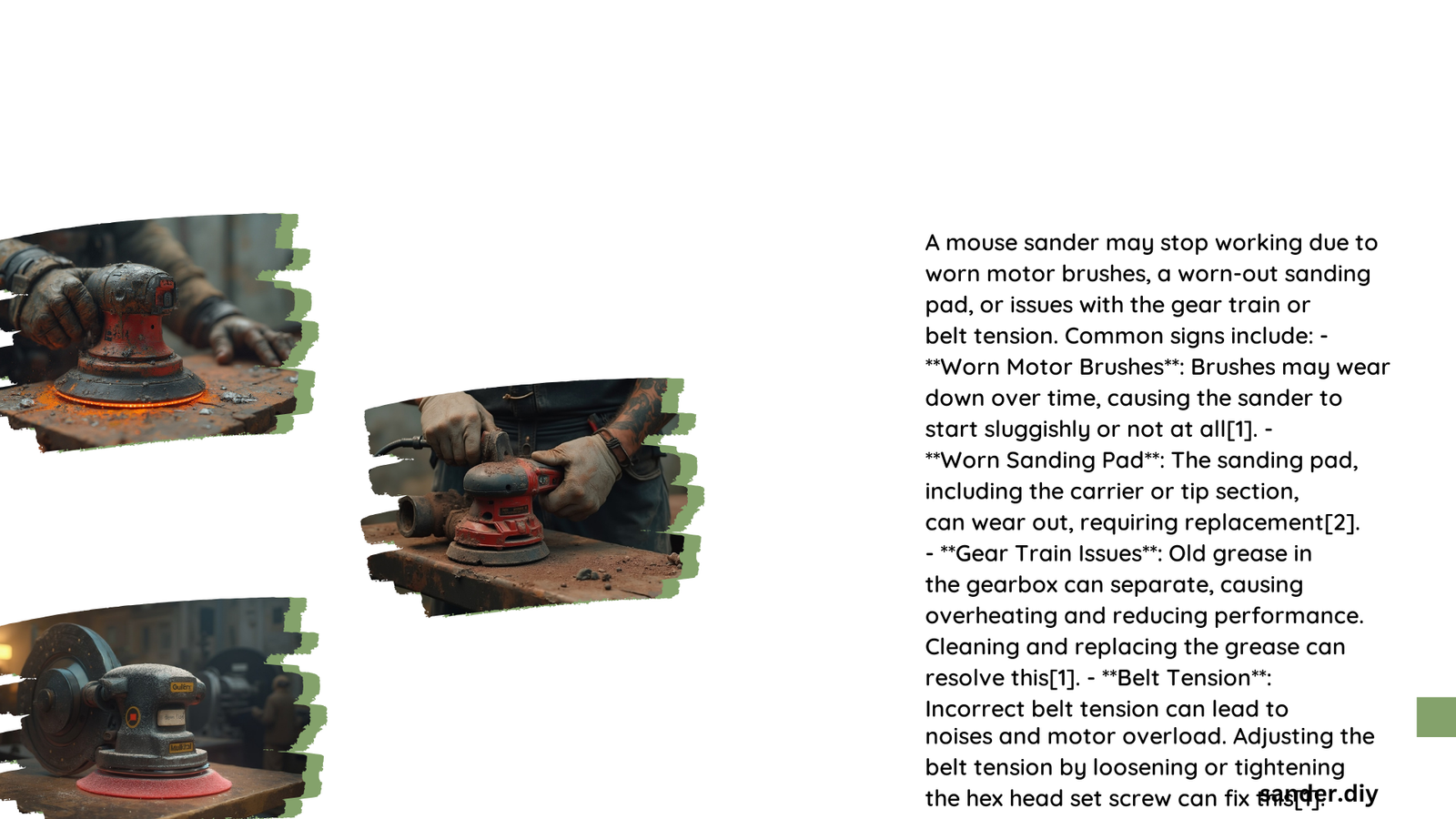When a mouse sander suddenly stops working, it can disrupt your woodworking project and cause frustration. A non-functioning sander might result from various issues ranging from power supply problems to internal motor failures. Understanding the root cause is crucial for effective repair and getting your tool back to optimal performance, whether you’re a professional craftsman or a DIY enthusiast.
What Causes a Mouse Sander to Stop Working?
Can Power Problems Disable Your Sander?
Power-related issues are often the primary culprits when a mouse sander stops functioning. Here’s a detailed breakdown:
| Power Issue | Potential Symptoms | Recommended Action |
|---|---|---|
| Low Voltage | Weak performance | Check outlet voltage |
| Damaged Cord | Intermittent operation | Inspect for physical damage |
| Tripped Circuit | Complete power loss | Reset circuit breaker |
Voltage and Electrical Considerations
Most mouse sanders require a consistent power supply of 120 volts. Fluctuations or insufficient voltage can cause:
– Reduced motor performance
– Unexpected shutdowns
– Potential long-term damage to internal components
How to Diagnose Motor Failures?
Motor issues can manifest through several indicators:
- Unusual Sounds
- Grinding noises
- Clicking before complete stoppage
-
Inconsistent motor rotation
-
Physical Inspection
- Check motor brushes for wear
- Examine internal connections
- Look for signs of overheating
What Tools Do You Need for Repair?
Essential repair toolkit:
– Multimeter
– Screwdriver set
– Wire strippers
– Replacement motor brushes
– Electrical contact cleaner
Step-by-Step Troubleshooting Process

How to Test Your Mouse Sander?
- Power Source Verification
- Confirm outlet provides stable 120V
- Test with alternative power outlet
-
Check power cord for visible damage
-
Motor Brush Examination
- Remove sander’s back panel
- Inspect brush condition
- Measure brush length against manufacturer specifications
- Replace if significant wear is detected
Can Dust Accumulation Cause Stoppage?
Dust and debris can significantly impact sander performance:
– Clean dust collection system regularly
– Use compressed air to remove internal debris
– Ensure ventilation ports remain unobstructed
Professional Repair vs. DIY
| Repair Complexity | Recommended Action |
|---|---|
| Minor Issues | DIY repair |
| Complex Motor Failure | Professional service |
| Warranty Period | Contact manufacturer |
When Should You Seek Professional Help?
Consider professional repair if:
– Multiple troubleshooting attempts fail
– Internal components show significant damage
– Repair cost exceeds 50% of tool’s value
Preventive Maintenance Tips
- Regular cleaning
- Proper storage
- Avoid overloading
- Use appropriate sandpaper
- Periodic lubrication of moving parts
Cost Considerations
Repair costs typically range:
– Motor brush replacement: $10-$30
– Cord repair: $15-$50
– Professional diagnostic: $50-$100
Pro Tip: Always consult your specific mouse sander’s manual for model-specific troubleshooting guidance.
Final Recommendations
- Document all repair attempts
- Keep original packaging and manual
- Consider manufacturer warranty
- Invest in quality replacement parts
Reference:
– Black & Decker Official Support
– Power Tool Repair Guide
– Woodworking Tool Maintenance
